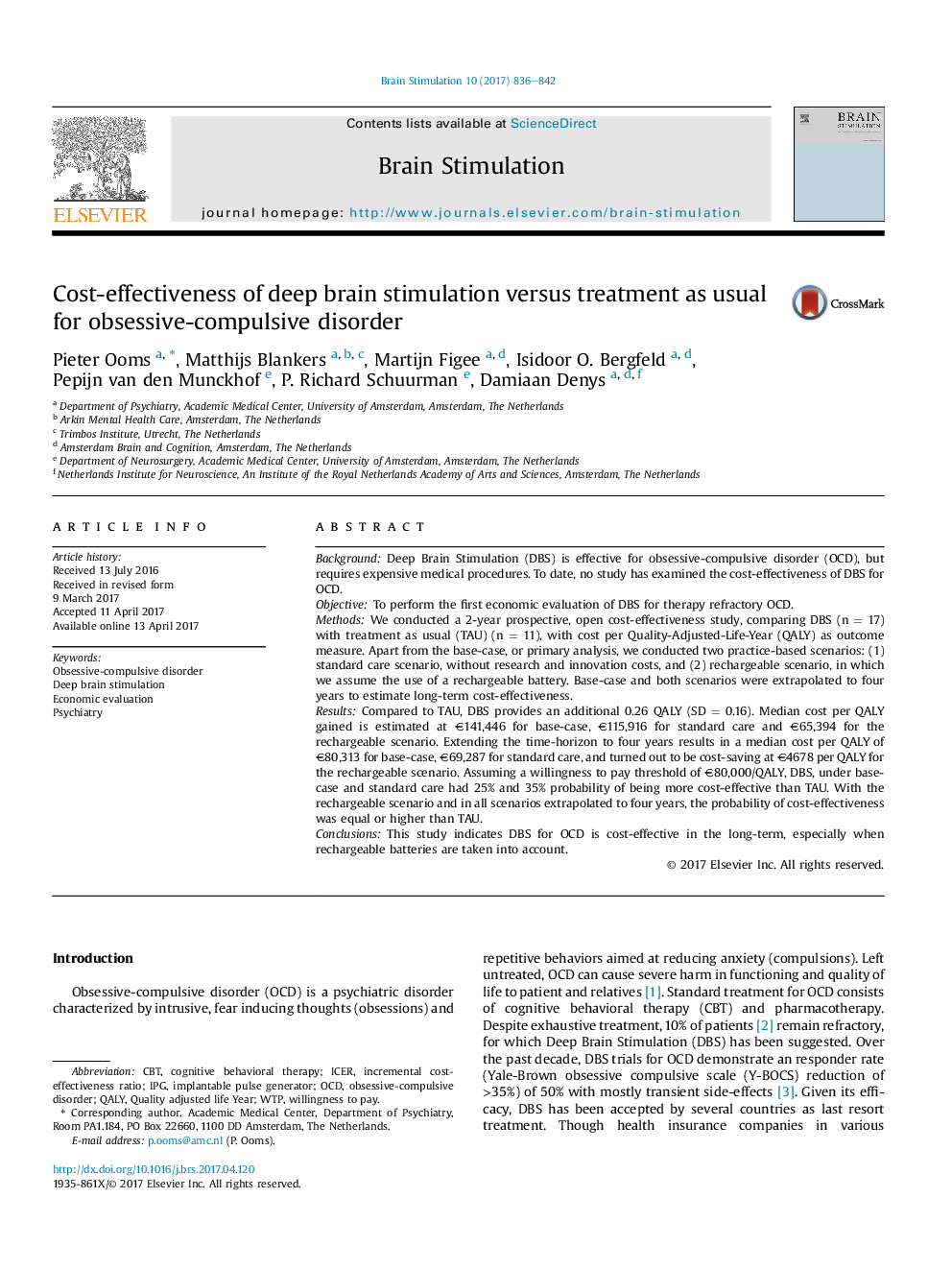| کد مقاله | کد نشریه | سال انتشار | مقاله انگلیسی | نسخه تمام متن |
|---|---|---|---|---|
| 5626502 | 1406324 | 2017 | 7 صفحه PDF | دانلود رایگان |
- This is the first economic evaluation of DBS for OCD.
- DBS has a 25% probability of being cost-effective compared to TAU when evaluated over the first 2 years.
- Adding rechargeable batteries increased the probability of cost-effectiveness to 57% (2 years) and 87% (4 years).
BackgroundDeep Brain Stimulation (DBS) is effective for obsessive-compulsive disorder (OCD), but requires expensive medical procedures. To date, no study has examined the cost-effectiveness of DBS for OCD.ObjectiveTo perform the first economic evaluation of DBS for therapy refractory OCD.MethodsWe conducted a 2-year prospective, open cost-effectiveness study, comparing DBS (n = 17) with treatment as usual (TAU) (n = 11), with cost per Quality-Adjusted-Life-Year (QALY) as outcome measure. Apart from the base-case, or primary analysis, we conducted two practice-based scenarios: (1) standard care scenario, without research and innovation costs, and (2) rechargeable scenario, in which we assume the use of a rechargeable battery. Base-case and both scenarios were extrapolated to four years to estimate long-term cost-effectiveness.ResultsCompared to TAU, DBS provides an additional 0.26 QALY (SD = 0.16). Median cost per QALY gained is estimated at â¬141,446 for base-case, â¬115,916 for standard care and â¬65,394 for the rechargeable scenario. Extending the time-horizon to four years results in a median cost per QALY of â¬80,313 for base-case, â¬69,287 for standard care, and turned out to be cost-saving at â¬4678 per QALY for the rechargeable scenario. Assuming a willingness to pay threshold of â¬80,000/QALY, DBS, under base-case and standard care had 25% and 35% probability of being more cost-effective than TAU. With the rechargeable scenario and in all scenarios extrapolated to four years, the probability of cost-effectiveness was equal or higher than TAU.ConclusionsThis study indicates DBS for OCD is cost-effective in the long-term, especially when rechargeable batteries are taken into account.
Journal: Brain Stimulation - Volume 10, Issue 4, JulyâAugust 2017, Pages 836-842
